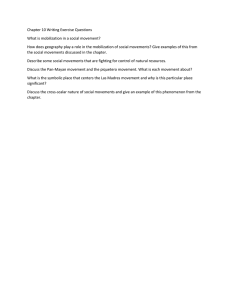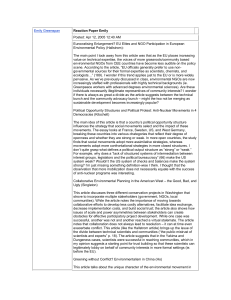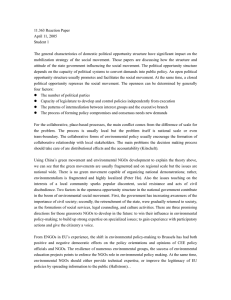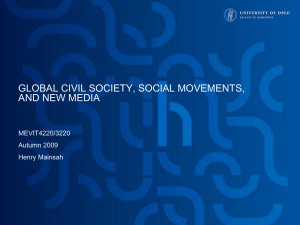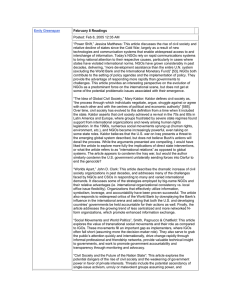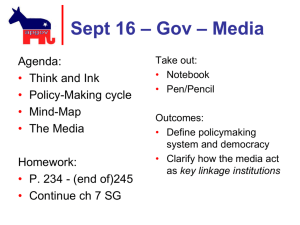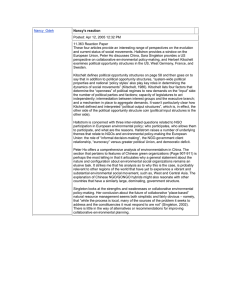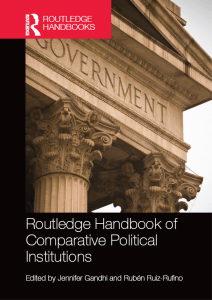Lindsay Campbell 12 April 2005 11.363: Response Paper 8
advertisement
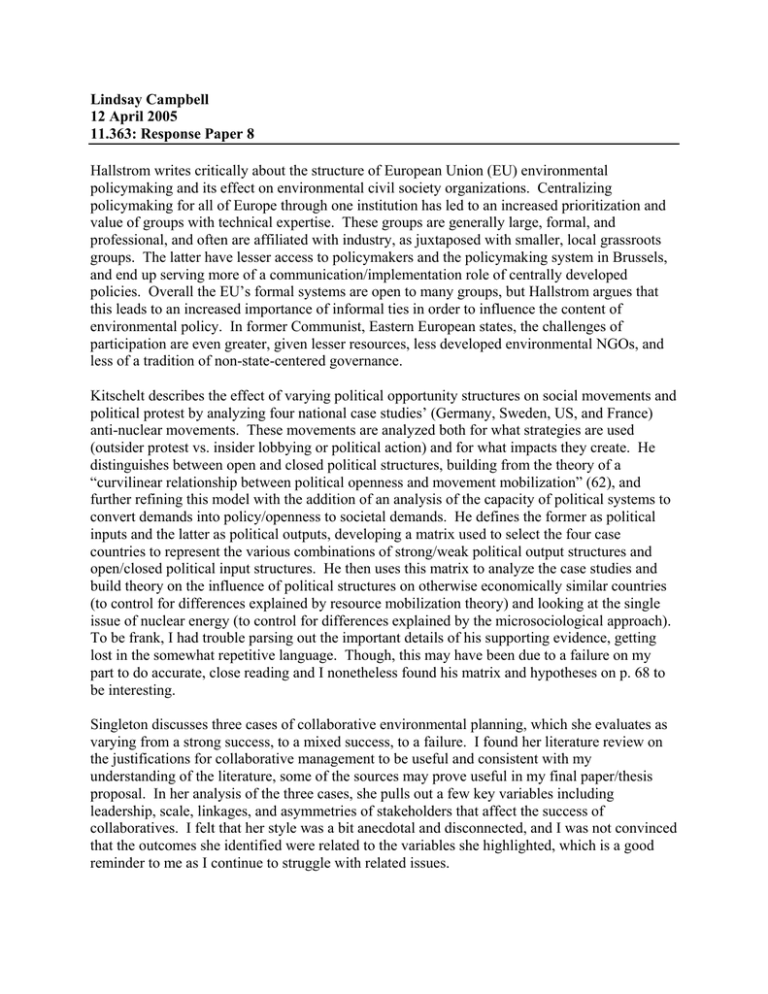
Lindsay Campbell 12 April 2005 11.363: Response Paper 8 Hallstrom writes critically about the structure of European Union (EU) environmental policymaking and its effect on environmental civil society organizations. Centralizing policymaking for all of Europe through one institution has led to an increased prioritization and value of groups with technical expertise. These groups are generally large, formal, and professional, and often are affiliated with industry, as juxtaposed with smaller, local grassroots groups. The latter have lesser access to policymakers and the policymaking system in Brussels, and end up serving more of a communication/implementation role of centrally developed policies. Overall the EU’s formal systems are open to many groups, but Hallstrom argues that this leads to an increased importance of informal ties in order to influence the content of environmental policy. In former Communist, Eastern European states, the challenges of participation are even greater, given lesser resources, less developed environmental NGOs, and less of a tradition of non-state-centered governance. Kitschelt describes the effect of varying political opportunity structures on social movements and political protest by analyzing four national case studies’ (Germany, Sweden, US, and France) anti-nuclear movements. These movements are analyzed both for what strategies are used (outsider protest vs. insider lobbying or political action) and for what impacts they create. He distinguishes between open and closed political structures, building from the theory of a “curvilinear relationship between political openness and movement mobilization” (62), and further refining this model with the addition of an analysis of the capacity of political systems to convert demands into policy/openness to societal demands. He defines the former as political inputs and the latter as political outputs, developing a matrix used to select the four case countries to represent the various combinations of strong/weak political output structures and open/closed political input structures. He then uses this matrix to analyze the case studies and build theory on the influence of political structures on otherwise economically similar countries (to control for differences explained by resource mobilization theory) and looking at the single issue of nuclear energy (to control for differences explained by the microsociological approach). To be frank, I had trouble parsing out the important details of his supporting evidence, getting lost in the somewhat repetitive language. Though, this may have been due to a failure on my part to do accurate, close reading and I nonetheless found his matrix and hypotheses on p. 68 to be interesting. Singleton discusses three cases of collaborative environmental planning, which she evaluates as varying from a strong success, to a mixed success, to a failure. I found her literature review on the justifications for collaborative management to be useful and consistent with my understanding of the literature, some of the sources may prove useful in my final paper/thesis proposal. In her analysis of the three cases, she pulls out a few key variables including leadership, scale, linkages, and asymmetries of stakeholders that affect the success of collaboratives. I felt that her style was a bit anecdotal and disconnected, and I was not convinced that the outcomes she identified were related to the variables she highlighted, which is a good reminder to me as I continue to struggle with related issues. Ho writes about the evolution of environmentalism in China, as it has been affected by varying levels of state control of and toleration for social organizations. He attempts to offer a more nuanced picture than simply the idea that the authoritarian state has stifled all of civil society. He goes into some detail on the system of registering NGOs, the ways in which NGOs have subverted or gone around these guidelines, and the preponderance of nonconfrontational, locallevel tactics that have emerged. The author concludes with five case studies, analyzed for origins, scope of activities, and method of resource mobilization
